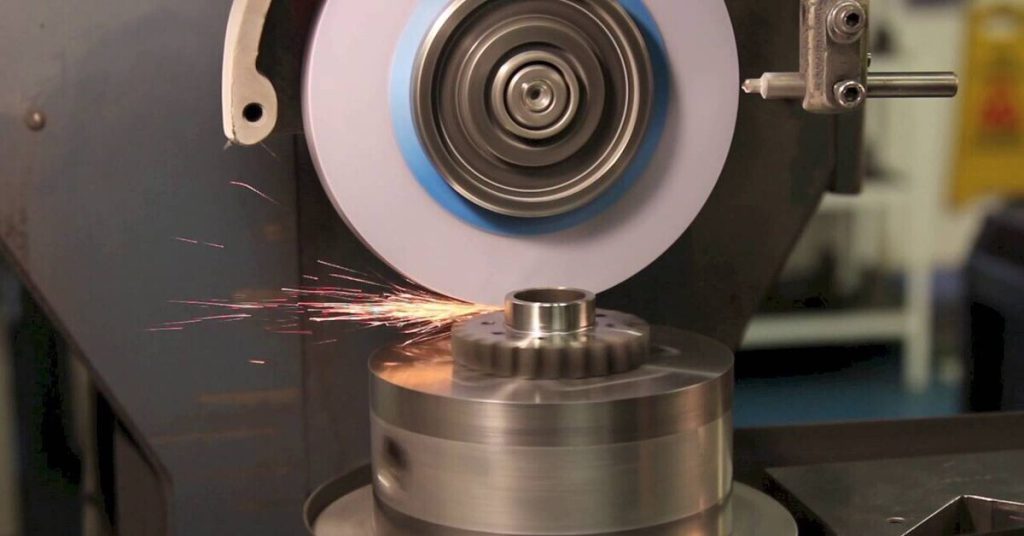Precision and ultra-precision machining are of the order of micro inch, sub-micro inch, and even nano inch. This is mainly applied in automobiles, home appliances, IT electronic information high-tech fields, and military and civil uses. Additionally, the realization of precision and ultra-precision machining technology has also driven the growth of machinery, molds, hydraulics electronics and semiconductors, optics, sensors, measurement technologies, and the metal processing industry.
The concept and scope of precision and ultra-precision machining
Usually, according to machining accuracy, mechanical machining can be divided into three stages: general, precision, and ultra-precision. Today’s precision machining may be tomorrow’s general machining. Precision machining solves two problems: machining accuracy, including geometric tolerances, dimensional accuracy, and surface conditions, and machining efficiency.
Some machining can achieve good machining accuracy, but it is difficult to achieve high machining efficiency. Precision machining includes micromachining, ultra-micromachining, finishing, and other machining technologies. Traditional precision machining methods include belt grinding, precision cutting, honing, precision grinding, and polishing.
Belt grinding
Belt grinding is the use of a blended cloth with abrasive as a grinding tool to process the workpiece. It belongs to the category of coated abrasive grinding and has the characteristics of high productivity, good surface quality, and a wide range of applications.
Precision cutting
Also known as diamond tool cutting (SPDT), uses high-precision machine tools and single-crystal diamond tools for cutting. It is mainly used for precision machining of soft metals such as copper and aluminum that are not suitable for grinding, such as magnetic drums and disks used in computers, and metal reflectors used in high-power lasers. The precision is 1~2 levels higher than that of general cutting.
Honing
A honing head composed of oilstone sand strips reciprocates along the surface of the workpiece under a certain pressure. It is mainly used to process cast iron and steel and is not suitable for processing non-ferrous metals with low hardness and good toughness.
Precision grinding and polishing
A processing method that uses abrasives and processing fluids between the workpiece and the tool, and mechanical friction between the workpiece and the tool to make the workpiece reach the required size and precision. Precision grinding and polishing can achieve precision and surface roughness that other processing methods cannot achieve for metal and non-metal workpieces.
The processing metamorphic layer is very small, the surface quality is high, and the precision grinding equipment is simple. It is mainly used for the processing of planes, cylindrical surfaces, gear tooth surfaces, and mating parts with sealing requirements. It can also be used for the finishing of gauges, gauge blocks, fuel injectors, valve bodies, and valve cores.
Polishing
Polishing is a kind of micro-machining of the workpiece surface by mechanical, chemical, and electrochemical methods. It is mainly used to reduce the surface roughness of the workpiece. Commonly used methods include: manual or mechanical polishing, ultrasonic polishing, chemical polishing, electrochemical polishing, and electrochemical mechanical composite processing.
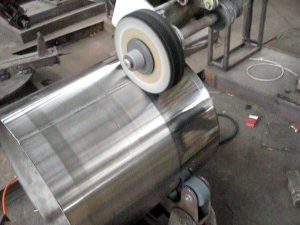
Ultra-precision machining Technologies
Ultra-precision machining i include micro-machining, ultra-micro-machining, finishing machining, and finishing machining. Micro-machining technology refers to the machining technology for manufacturing micro-sized parts; ultra-micro-machining technology refers to the machining technology for manufacturing ultra-micro-sized parts.
They are proposed for the manufacturing requirements of integrated circuits. Due to their small size, their accuracy is expressed by the absolute value of the cut size, rather than the ratio of the machined size to the size error. Finishing machining generally refers to the machining method of reducing surface roughness and improving the mechanical properties of the surface layer. It does not focus on improving machining accuracy. Its typical machining methods include honing, grinding, ultra-finishing, and chipless machining. These machining methods can not only improve surface quality but also improve machining accuracy.
Finishing machining is a new term proposed in recent years. It corresponds to finishing machining and refers to a processing method that not only reduces surface roughness and improves the mechanical properties of the surface layer, but also improves processing accuracy (including size, shape, and position accuracy).
Current Status and Application of Precision Machining
-
Current Status and Application of Precision Forming
Precision casting, precision die pressing, plastic processing, and thin plate precision forming technologies are highly valued in industrially developed countries, and a large amount of funds are invested in their development. In the 1970s, the US Air Force presided over the formulation of the “Forging Process Modernization Plan” to modernize the important forging process, using CAD/CAM more, and reducing the manufacturing cycle of new forgings by 75%.
In 1992, the US Department of Defense proposed the “Military Key Technology List”, which included precision plastic forming processes such as isostatic forming, CNC computer-controlled spinning, plastic deformation and shear forming machinery, superplastic forming/diffusion bonding, and hydraulic stretch forming.
Current Status of Precision Forming
In recent years, foreign countries have also developed “forging and blade precision forging processes for large die forgings”, “rapid solidification powder lamination processes”, “strong spinning processes for large complex structural parts”, “superplastic forming processes for difficult-to- deform materials”, and “forming processes for advanced materials (such as metal-based composite materials, ceramic-based composite materials, etc.)”.
China’s superplastic forming technology is also used in aerospace and mechanical industries, such as satellite components, missiles, and rocket cylinders in the aerospace industry. The superplastic forming method is used to manufacture the chlorine alloy recovery cabin of the reconnaissance satellite. At the same time , the superplastic forming process of zinc, copper, aluminum, and chlorine alloys has been mastered. The minimum forming thickness can reach 0.3mm, and the shape is also more complex.
In addition, precision die-casting technology has been widely used in foreign countries to manufacture weapons. Commonly used precision die-casting technologies, such as closed forging, precision forming based on the principle of diversion, and isothermal forming, have been used in military production abroad. At present, precision die-casting technology is still less used in my country, and the accuracy is also poor. The accuracy abroad is ±0.05-0.10mm, and that in my country is ±0.1-0.25mm.
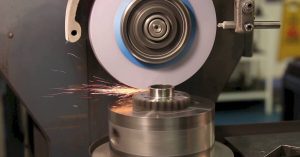
-
Development status and application of hole processing technology
In recent years, automobiles, mold parts, and metal processing have mostly adopted a production form centered on CNC machine tools. When performing hole processing, most of them use advanced equipment such as machining centers and CNC electric machining machines. High-speed and high -precision drilling processing has been put on the agenda. Regardless of the field of hole processing, achieving high precision and high speed is an important competitive means to obtain user orders.
In recent years, with the emergence of high-speed milling, cutting processing centered on milling tools is entering a period of high-speed and high-precision processing. In hole processing operations, high-speed steel twist drills are still widely used, but the gap between companies in hole processing accuracy and processing efficiency has gradually widened. The material of high-speed cutting drills is mainly ceramic-coated carbide.
When processing non-ferrous materials such as aluminum alloys, diamond-coated carbide drills, DLC-coated carbide drills, or drills with diamond-sintered body teeth can be used. In addition to using CNC cutting methods to perform precision processing of holes, high -speed and high-precision hole processing can also use boring and reaming methods to perform high-precision processing of holes. With the high speed of the spindle of the machining center, boring tools can be used to perform high-speed precision processing of holes.
With the development of IT-related industries, the demand for parts and components of devices used in the optical and electronic industries has grown rapidly in recent years. This growth has stimulated the rapid development of micro-shape and high-precision processing technology. Among them, the development and application of micro-hole processing technology is particularly eye-catching. Micro-hole processing has long been used in the processing of printed circuit boards, and a variety of processed materials, including steel, can be processed with drills for small diameters.
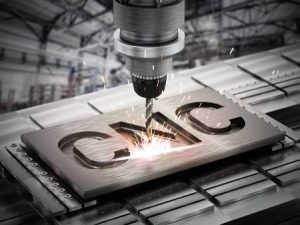
At present, in the processing of small-diameter holes, the minimum diameter cut by drills can be about φ50μm. Holes smaller than φ50μm are mostly completed by electrical processing. To suppress the generation of burrs, many researchers have proposed the use of ultrasonic vibration cutting.
At present, an ultrasonic vibration cutting mode with a wide range of applications and reasonable processes is being explored, including the study of the adaptability of machine tools. With the successful resolution of these problems, it is expected that the processing of tiny deep holes with Smaller diameters will be better achieved in the future, and the processing accuracy will be higher.
-
Development Status and Application of Special Heat Treatment
The special heat treatment process is one of the key manufacturing technologies of the national defense industry system. Vacuum heat treatment is widely used in aerospace structural parts processing with its unique advantages of no pollution, no oxidation, small deformation of workpieces, and a wide application range, such as surface carburizing or nitriding of gear structural parts, stress relief, strengthening or toughening treatment of various alloys or steel parts of missiles and spacecraft.
Typical structures include: instrument parts, transmission structures, fuel tanks, engine housings, etc.; more than 50% of heat treatment furnaces in the United States are vacuum heat treatment furnaces. Vacuum heat treatment furnaces have been widely used in computer control, and have now developed into vacuum chemical heat treatment and vacuum gas quenching heat treatment, including high-pressure vacuum gas quenching, high-flow vacuum gas quenching, and high-pressure high-flow vacuum gas quenching technology.
Laser heat treatment technology
In addition, laser heat treatment technology has been widely used in foreign countries in the fields of aviation, aerospace, electronics, instruments, etc., such as various complex surface parts, micro components, components that require local strengthening treatment, microelectronic devices, production and repair of large-scale integrated circuits, precision optical components, precision measuring components, etc.
Development trend of precision machining technology
The development trend of precision machining technology for the 21st century is reflected in the following aspects:
a. Precision
The core of precision machining is mainly reflected in the requirements for dimensional accuracy, profiling accuracy, and surface quality. At present, the accuracy of precision EDM has been comprehensively improved. By adopting a series of advanced processing technologies and process methods, mirror processing effects can be achieved and EDM of high-precision mold parts such as micro connectors, IC plastic packaging, mobile phones, and CD boxes can be completed.
b. Intelligence
Intelligence is one of the development trends of manufacturing technology in the 21st century. Intelligent manufacturing technology (IMT) integrates artificial intelligence into all aspects of the manufacturing process. By simulating the intelligent activities of human experts, it replaces or extends part of the mental labor in the manufacturing system.
During the manufacturing process, the system can automatically monitor its operating status and automatically adjust its parameters when it is disturbed by the outside world or internally stimulated to achieve the best state and self-organizing ability. The new CNC EDM machine tool adopts fuzzy control technology and expert system intelligent control technology. Fuzzy control technology is a control technology that determines the state of the EDM gap by computer monitoring, automatically selects the processing conditions that achieve the highest processing efficiency within the range of maintaining a stable arc, and automatically monitors the processing process to achieve the most stable processing process.
The expert system adopts a human-computer dialogue method. According to the processing conditions and requirements, after reasonably inputting the set value, it can automatically create a processing program and select the best processing condition combination for processing. Online automatic monitoring and adjustment of the processing process to achieve optimal control of the processing process.
When the expert system detects the processing conditions, it only needs to input the processing shape, electrode and workpiece materials, processing position, target roughness value, electrode scaling, shaking method, taper value, and other indicators to automatically calculate and configure the best processing conditions. The application of expert system intelligent technology makes machine tool operation easier and requires a lower technical level of operators.
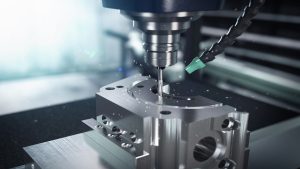
c. Automation
The successful application of automation technology not only improves efficiency and ensures product quality, but also can replace people to complete work in dangerous places. Large-scale production automation can be completed through machine tool automation modification, application of automatic machine tools, special combination machine tools, and automatic production lines. Small-batch production automation can be completed through NC, MC, CAM, FMS, CIM, IMS, etc.
In the future implementation of automation technology, more attention will be paid to the role of people in the automation system. At the same time, automation begins to face small and medium-sized enterprises, taking economic and practical as the starting point to meet the needs of continuous product diversification and personalization. The functions of automatic measurement and alignment, automatic positioning, and continuous processing of multiple workpieces possessed by CNC EDM machines have played a good role in their automation performance.
The automatic operation process does not require human intervention, which can improve processing accuracy and efficiency. At present, the most advanced CNC EDM machine tools are equipped with electrode libraries and standard electrode fixtures. As long as the electrodes are loaded into the tool library before processing and the processing program is compiled, the entire EDM process can be automatically operated day after day, almost without manual operation. The automated operation of the machine tool reduces the labor intensity of the operator and improves production efficiency.
d. Efficiency
The requirements of modern processing provide the best processing mode for CNC EDM technology, that is, it requires a significant improvement in the efficiency of rough and fine processing while ensuring processing accuracy. For example, in the fields of mobile phone casings, home appliances, electrical appliances, electronic instruments, etc., it is required to reduce auxiliary time (such as programming time, electrode and workpiece positioning time, etc.), while reducing the roughness from the original Ra0.8μm to Ra0.25μm, so that manual polishing is no longer required after discharge.
This not only shortens the processing time and saves the trouble of post-processing, but also improves the quality of the mold, and the use of powder processing equipment can meet the requirements. This requires enhancing the automatic programming function of the machine tool and configuring fixtures and devices for positioning the electrode and workpiece. If graphite electrode materials are used in the rough processing of large workpieces, it is also a good way to improve processing efficiency.
e. Informatization
Information, material, and energy are the three elements of the manufacturing system. With the application of computers, automation, and communication network technology in the manufacturing system, the role of information is becoming more and more important. Information input in the product manufacturing process has become the main factor determining the product cost. The essence of the manufacturing process is the collection, input, processing, and treatment of various information resources in the manufacturing process. The final product can be regarded as the material manifestation of information.
Therefore, information can be regarded as an industry, including in manufacturing. For this reason, some companies have begun to use network technology, computer networking, information highways, satellite data transmission, etc. to achieve remote production. Make production decentralized and networked to meet the needs of high-flexibility production in the 21st century.
f. Flexibility
With the rapid development of science and technology and the continuous improvement of people’s living standards, the speed of product replacement is accelerating, which requires modern enterprises to have a certain degree of production flexibility to meet the changing needs of the market. The so-called flexibility to refer to the ability of a manufacturing system to adapt to various changes in production conditions. It is related to system solutions, personnel, and equipment. The flexibility of the system solution refers to the degree of freedom in processing different parts.
Personnel flexibility refers to the adaptability of operators to ensure processing tasks and complete quantity and time requirements. Equipment flexibility refers to the ability of machine tools to adapt to the processing of new parts in a short period.
g. Integration
The role of integration is to integrate multiple unit systems that originally operated independently into a new system that can work in a coordinated manner and has stronger functions. Integration is not a simple connection but is achieved through unified planning and design, analysis of the role and relationship of the original unit system, and optimization and reorganization.
The purpose of integration is to achieve functional integration of manufacturing enterprises. Functional integration should be achieved with the help of modern management technology, computer technology, automation technology, and information technology. At the same time, it is also necessary to emphasize human integration. Since there can be no people in the system, the effect of system operation is related to the enterprise’s business philosophy, operation mechanism, and management mode. While integrating technology, it is also necessary to emphasize the integration of management and people. Integrated production will become the dominant production method for the 21st century.
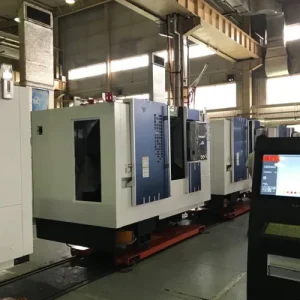
Precision and ultra-precision machining is one of the most important development directions of the modern machinery manufacturing industry. It plays a vital role in improving the performance and quality of electromechanical products and developing high-tech and has become a key technology for success in international competition.
Chinese private enterprises have sufficient economic strength to modernize their enterprises. The introduction of advanced equipment and the influx of a large number of professional talents have rapidly improved the manufacturing level in many coastal areas. With the deepening of the scientific and democratic process of national decision -making, I believe that my country’s manufacturing industry will develop faster and healthier.

